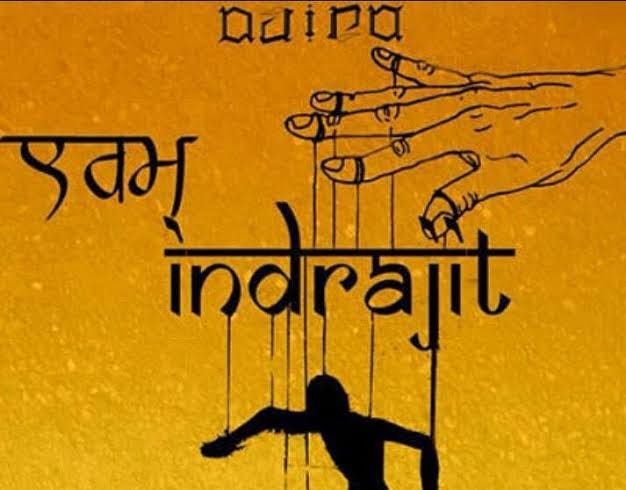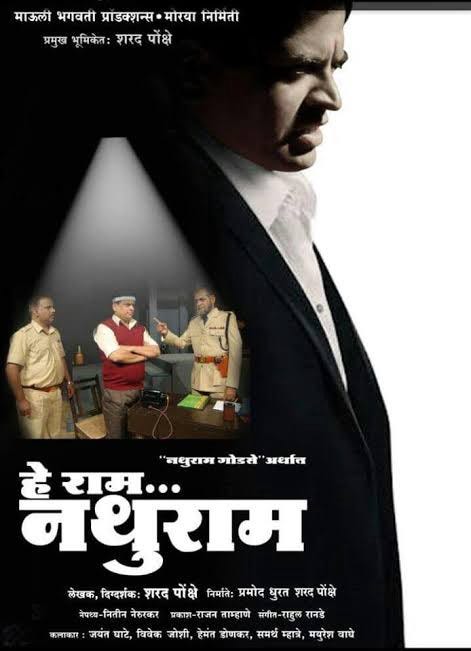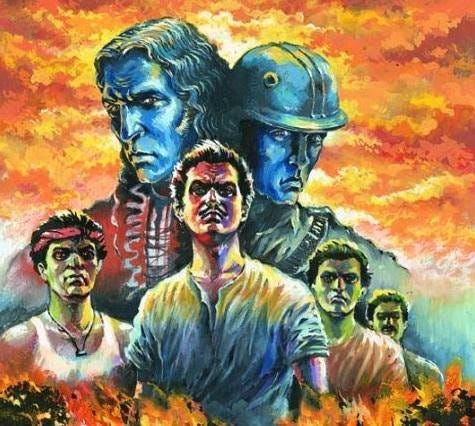10 Indian Plays you must not miss
Theatre, it's artists, the environment of an act may not be successful in altering the circumstances of one's life but it beautifully knows to alter one's frame of mind.
India is a land of diversity, vibrancy, colors, culture, mythology, languages, and dialects which give a home to a lot of stories.
Our plays have traversed through history and have continued to reach every corner to show all sides of our culture and society. This art arouses a lot of other art forms which makes it more celebrated and gives it a folk touch. Our theatres are not just limited to entertain but have had a history to evoke awareness and this legacy has continued to be there.
So, here we tour to our most celebrated plays that theatre lovers must not ever miss.
1. Ebong Indrajit by Badal Sircar
The year 1963 brought a remarkable milestone to the Indian theaters by Badal Sircar who originally wrote the play in Bengali and was performed by the theatre group 'Shatabdi’.
This play has incredible narration where the protagonist and the writer are often in an inner conversation. It has hit many psychological areas of the human mind. It is a beautiful portrayal of a writer’s connection with a character and puts on a scenario where the spectators may sense the plot as a circle within a circle. The play comprises three acts where it revolves around a writer’s intend to start his plot which accompanies a lot of distress, dissatisfaction, and annoyance which was portrayed by the way the first scene came into pace. There’s something about the fourth character, Indrajit. The writer depicted mediocrity and a man who had millions of queries and disagreements from the way of living. There prevail an extraordinarily conflicting theory and particularity with the name Indrajit until the writer got convinced to give an ordinary name to the fourth character. The starry-eyed Indrajit has a totally different approach towards life and has always considered the working of others' lives to be pointless and absurd.
The play at its final stage shows how realization hit hard and everything, in reality, has to be accepted. It also shows how the writer’s frustration, his mother’s interruptions, and the protagonist’s thought about life proceeded parallel to each other. The play ended in a seamless manner as if it completed a circle, just as life is.
2. Krishnan's Dairy by Jacob Ranjan(1997)
The play by Indian Ink Production under the direction of Justin Lewis has explored a number of drama elements including love, humor, colors, tragic events, and realistic happenings.
Krishnan's Dairy has been enacted by the writer himself in the most innovative way which got a lot of interest from the viewers as it was portrayed with all the glittering elements. The best part of it was the use of masks to depict the characters which made it eye-catchy as it was done so rapidly and skillfully by Ranjan.
The script had a love story between Krishnan and Zeena who are in an arranged marriage, so here, love is different from the modern way of loving. It shows how the expression of love varies and can take forms. Within the story, there is a retelling of another story that's known by all, the story behind the Taj Mahal by Shah Jahan. The Taj Mahal believed to be the symbol of love is shown to have a contrasting existence due to the cruelty that ensued. The simultaneous moving of the two love stories into two different frames gave a lot of thrill, comparisons, and essence to the plot.
3. Hey Ram Nathuram by Sharad Ponkshe
This play is highly controversial as it questions and portrays a different side of an event that is well known since the incident happened. Nathuram Godse, the man who assassinated Mahatma Gandhi, has his say that’s loud and clear in this play. This play is based on the book, May It Please Your Honor by Gopal Godse. It is enacted by a famous Marathi actor Sharad Ponkshe who embodied Nathuram Godse in a way that it seemed like he had some spiritual connection with him. The play was initially subjugated to a number of controversies when it was produced under the name 'Mi Nathuram Godse Boltoy’, it had to undergo censorship and then it was unbanned which gave way to explore the stimulating and inspiring story of Nathuram Godse. This play has an incredible intensity which provokes one to question something that’s odd as it clearly doesn’t oblige all the people. This amazing story stands out as it shows and uncovers the other point of view of an incident that is widely known and recognized for the known side of it. Nathuram Godse is portrayed as a man of great valor and someone who never ignores his virtues, he possesses strong and clear intentions for his actions.
This play is moving and an extraordinary one that would evoke all viewers by some or the other way.
4. Silence! The court is in session by Vijay Tendulkar(1967)
It was originally 'Shantala! Court Chalu aahe! and further translated to its English form by Vijay Tendulkar, this play arrived in the theatres during the post-independence times, and it shook or uncovered the traditional mindset and gender defined roles that prevailed within the society. It portrayed society's patriarchal thinking and the vulnerability of the weaker sections if it questioned the age-old misogynistic practices which were blindly placed in the shelf of righteousness.
It was a highly debatable play as it hit hard on something that has existed since long enough, it spotted the dark sides of society, where inequality existed on the basis of what a woman can do, also introduces the hypocrisy of the male dominant society.
This play has a woman who is a school teacher and is pregnant before her marriage, this is where it all started as she was subjugated to a number of allegations without considering the circumstances which made it happen. It is all set in the court where hearings after hearings are made, a woman in the stockade being responsible for everything that happened, the convenient turning of points to safeguard the patriarchal thinking, and letting it persist to be right, taking brace on her lifestyle to make her illegitimate. This play worked out to be a mirror to society and even brought a number of logical questions that took the society beyond gender defined rules set by biased minds.
5. Yayati by Girish Karnad(1960)
A mythological play that was taken from the epic Mahabharat which was narrated in the most traditional way but depicted the stories that could be related to the modernized society. Yayati came out to be a great concept where sensuality is depicted in a very neutral manner, it portrayed the developed thoughts of the period which is to a large extent contemplated as conventional.
This play in Karnad was a legendary approach to put forward a beautifully woven tale that talks of love, desire, lust, responsibility, and credibility through folklore.
The innovative and creative narration gave it an upper hand which keeps the play alive and connected to the modern generation which can be inspiring and can evolve in proper ways. The play has a lot in its plot so the mythology lovers must not miss this one.
6. Andha Yug by Dharamavir Bharati(1953)
Mahabharata by Ved Vyasa is an ocean to a number of tales that can be elaborated and leave us astounded by the real purpose of it. One such play by Dharamavir Bharati, Andha Yug portrays the last day of the war that took up the peace and prosperity of Hastinapur. War makes a land barren by all means, rage, revenge, inability to conduct oneself wisely, and not understanding a signal or right path that comes as a disguise leads everything towards destruction.
It shows the scene of the battlefield where man has forgotten the consequences of war. It has completely depicted how humanity and morality are at stake. Krishna who intervened in the war to give some enlightenment to the Kauravas proposed a way through which everything could have been different but the blindfolded Kauravas couldn't see anything beyond revenge and position.
7. Shakuntala by Kalidasa
Indian Literature got enriched with this play during the 5th century CE and it has continued to be the best work that has intrigued the fascinated onlookers.
Shakuntala’s story has a lot to give to society, it portrayed how the circumstances made her fall in love with Dushyant, the king of Hastinapur, and fight for her son’s identity with a lot of courage. This story has dwelled areas of idealism, romanticism, and many more that made it a masterpiece.
The story of Shakuntala is also a place that gave our land its name 'Bharat' after her son’s name. Kalidas has woven this epitome with natural subjugation and utmost elegance.
8. Tumhaari Amrita by Feroz Khan(1992)
Tumhaari Amrita has been adapted by"love letters" by A.R. Gurney. It is a fascinating story of love that got initiated through letter exchanges, emotions, meaningful words, and chemistry. This play starred Shabana Azmi and Farook Sheikh who has done utmost justice to the subtle writing and has collected appreciation widely. It's a stagnant love story where the only expression is a letter, there are no movements, no props just a beautiful conversation that allows both the protagonists to know each other. Latif and Amrita dive deep within each other's lives. Both their lives are kept in front of us with detailing by the narration and their conversation, it is set in Lahore.
9. Nil Darpan by Dinabandhu Mitra(1860)
Indigo is a commercial crop and it was forced upon our Indian farmers to grow indigo under the British Empire to have profit in the export business. Indian farmers have faced brutality and scarcity of a number of basic resources for their livelihood. They barely managed to satiate their hunger through the food crop they grew but with this sudden demand for planting indigo got them startled and dismayed which led to starvation.
This play emerged as a revolt against the cruelty and tyranny of the empire. Nil Darpan gave rise to enlightenment and outrage within the farmers as it worked to create awareness amongst the planters. It was published in Dhaka.
10. Lottery by Munshi Premchand
A short story from Munshi Premchand’s work has endeavored to put forward the power of wealth which may change human relationships. His short stories have never been out of the timeline and are known to have humanity and morality as its base element. This play will take one to the changing attitude of the characters which symbolizes greed and also shows how love fades as it comes to money. This is a humorous act that represented how greed makes you a different human being and the consequences of getting into the shackles of selfish desires and greed.
These legendary, picturesque, and cultured plays of our land show that theatre and a number of vibrant arts have all emerged here, and our country has offered a lot towards this form of art.
This art form that has prevailed for a long time shouldn’t fade away, instead, it should be developed and celebrated further to keep our culture and integrity alive.
Indian plays have evidently portrayed that our culture is progressive as it has undergone a series of transitions in a positive sense. Our society has accepted those changes and has got together to move towards relevant advancements in a sustainable manner where our culture and traditions, which are our essence are not at stake.















